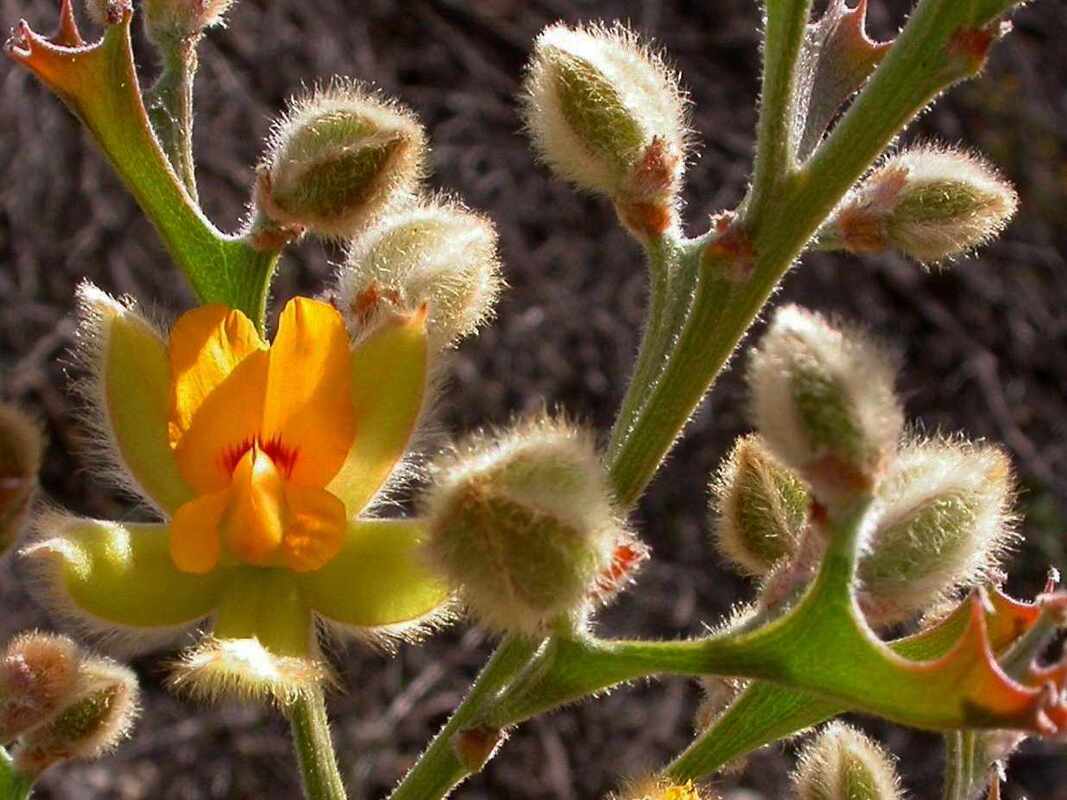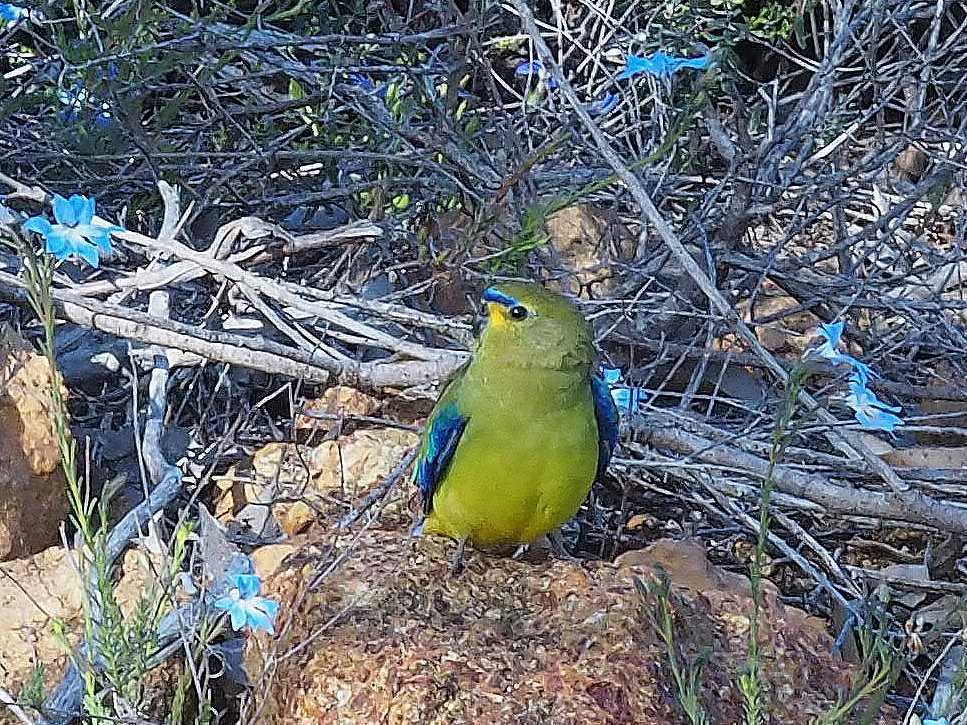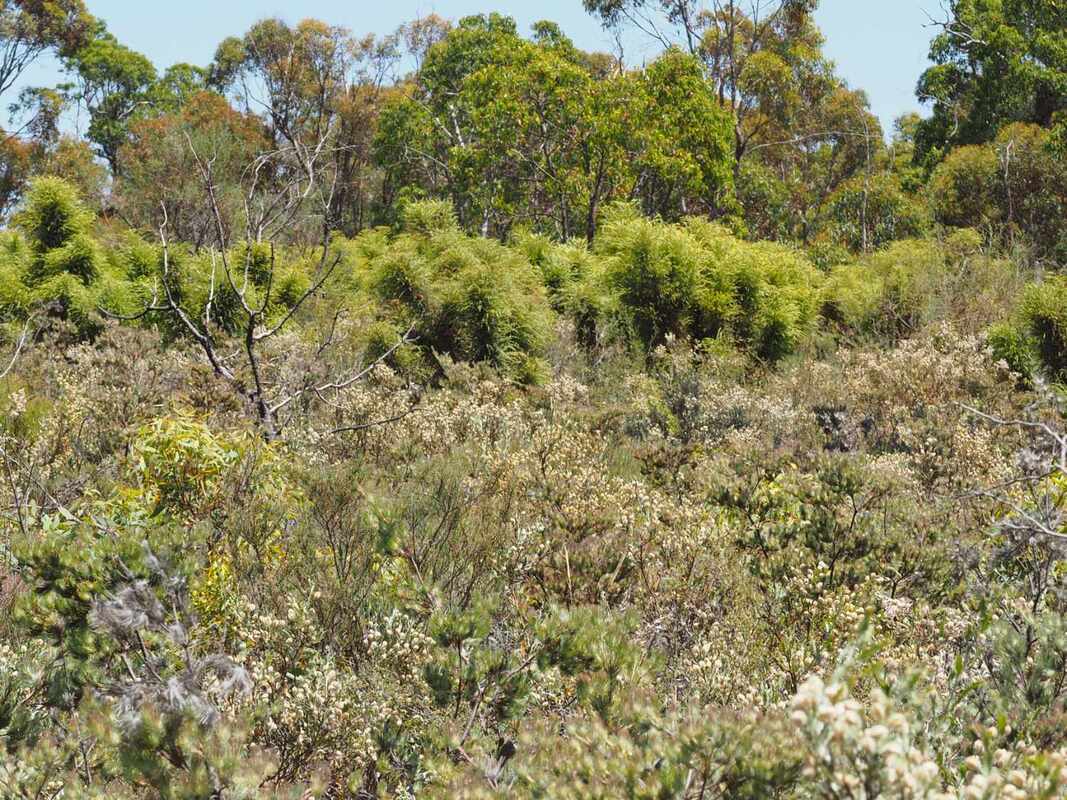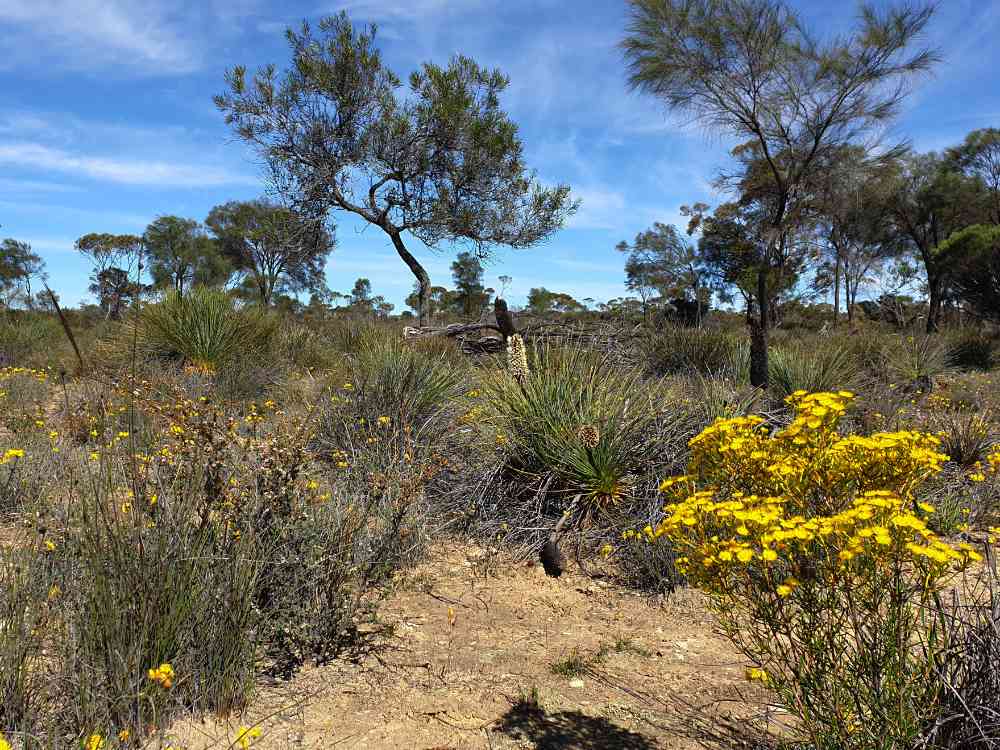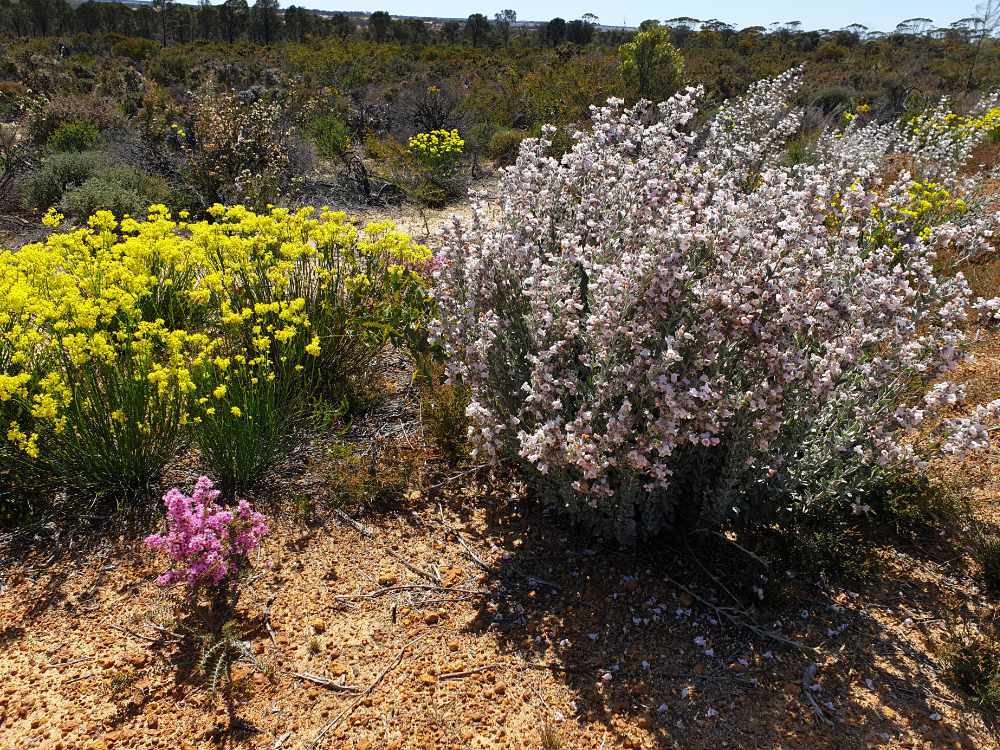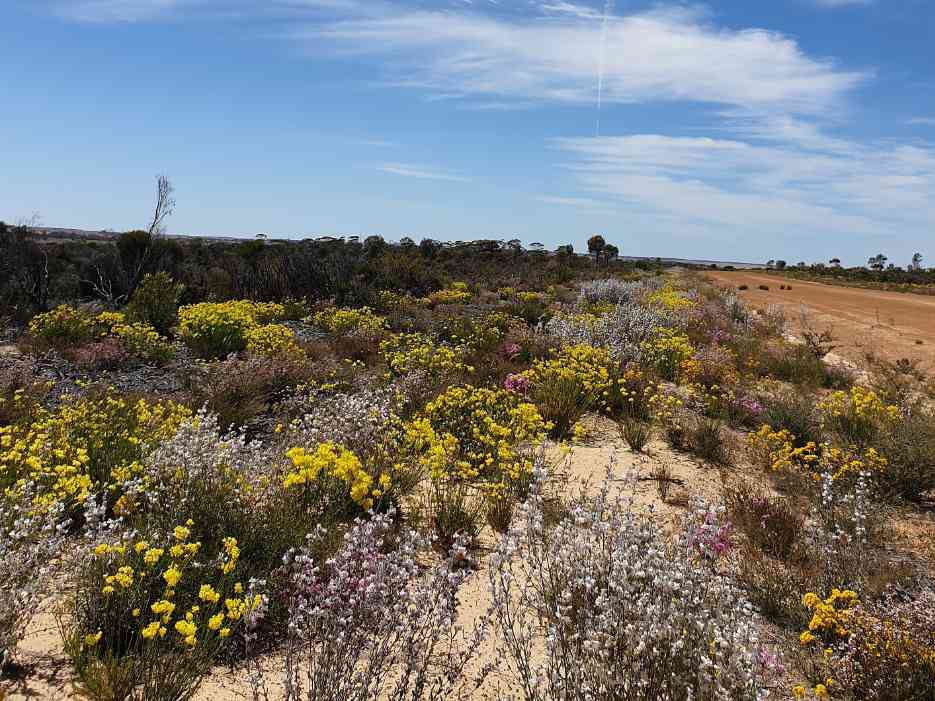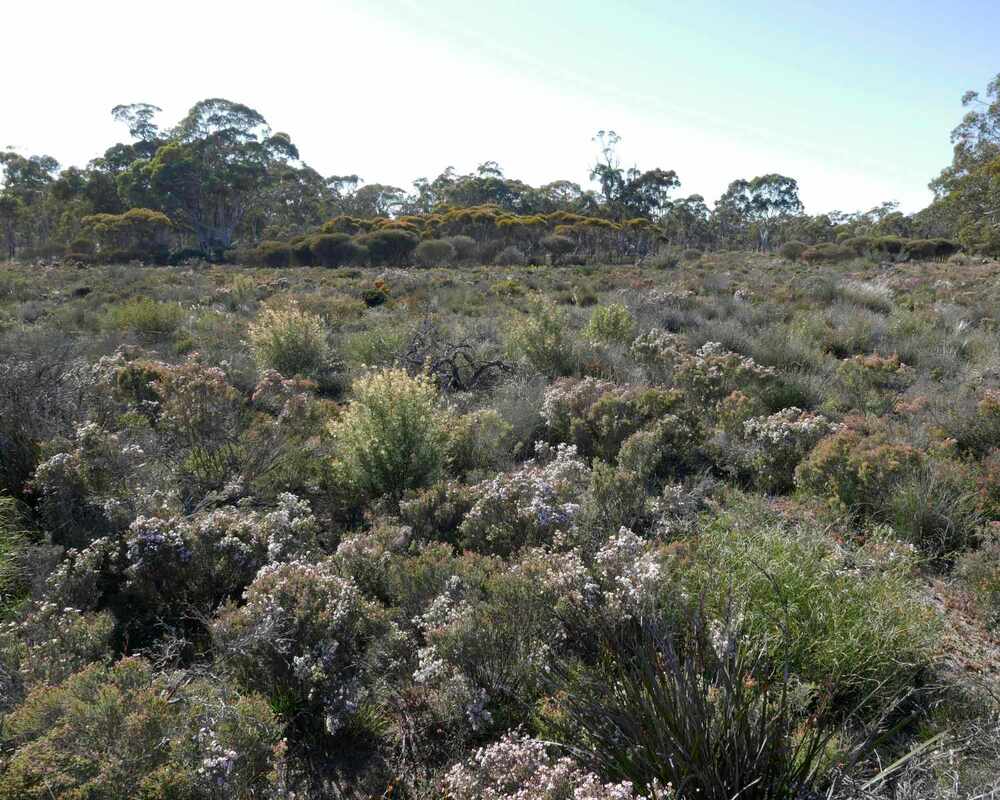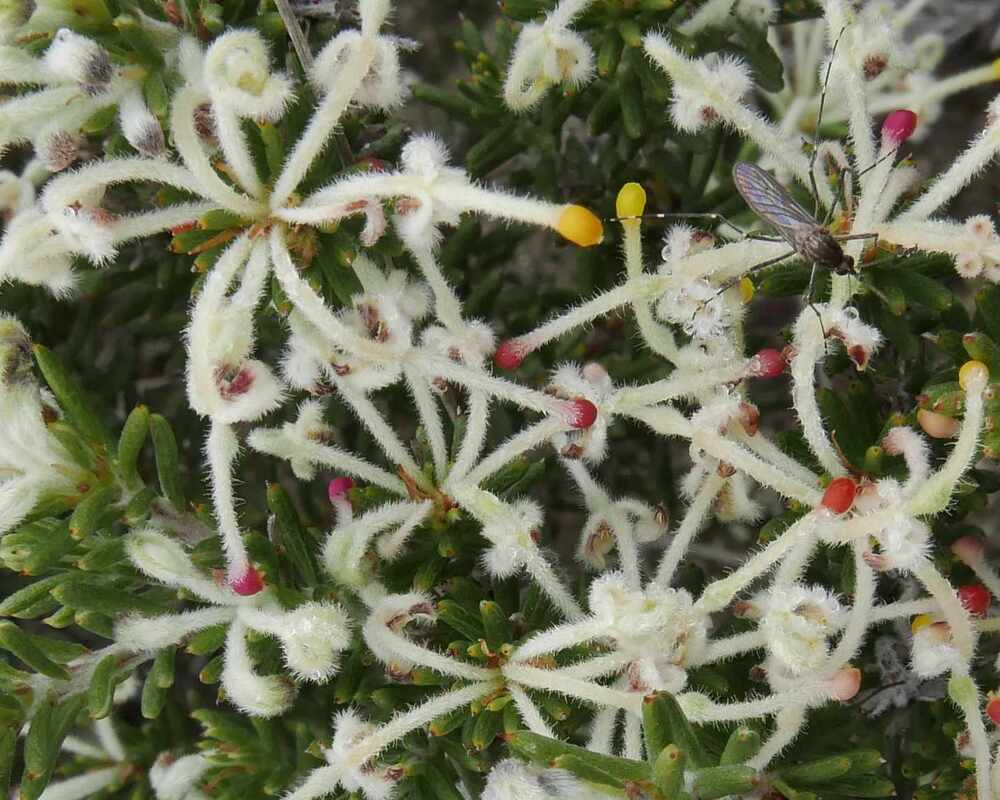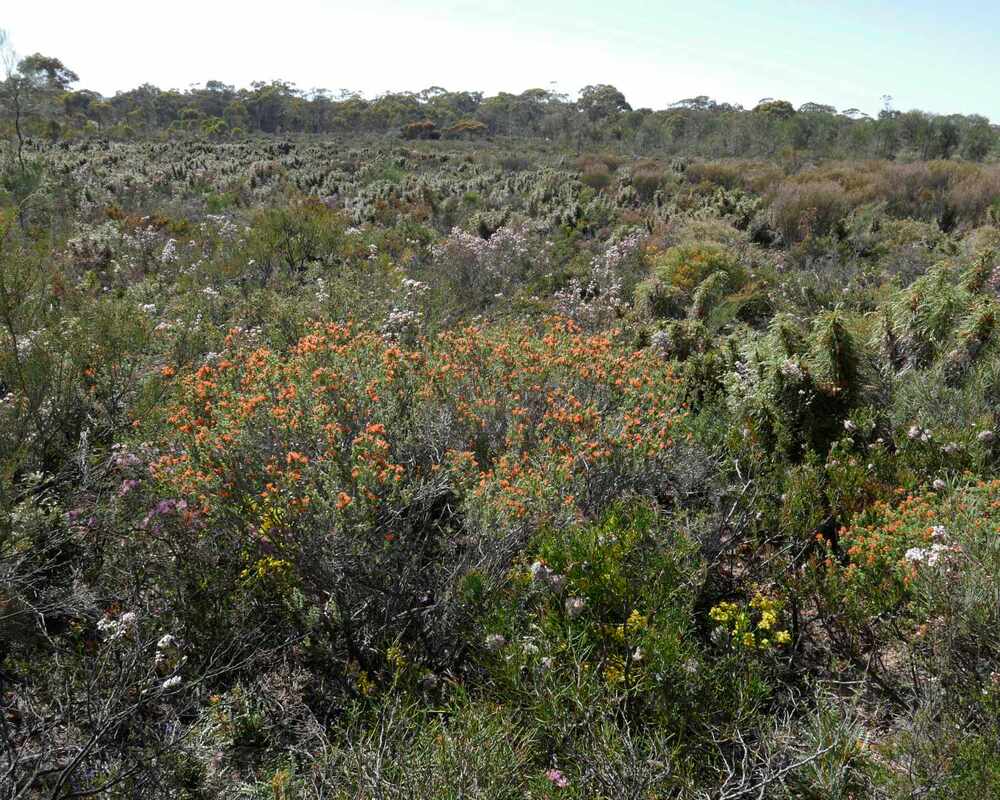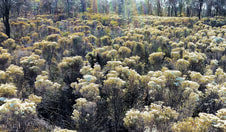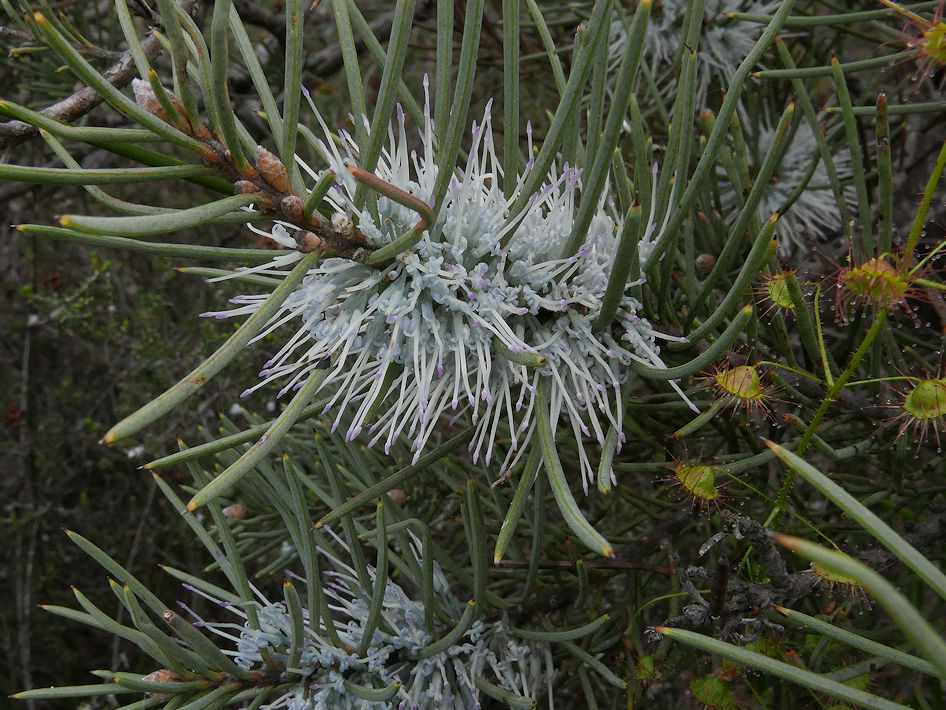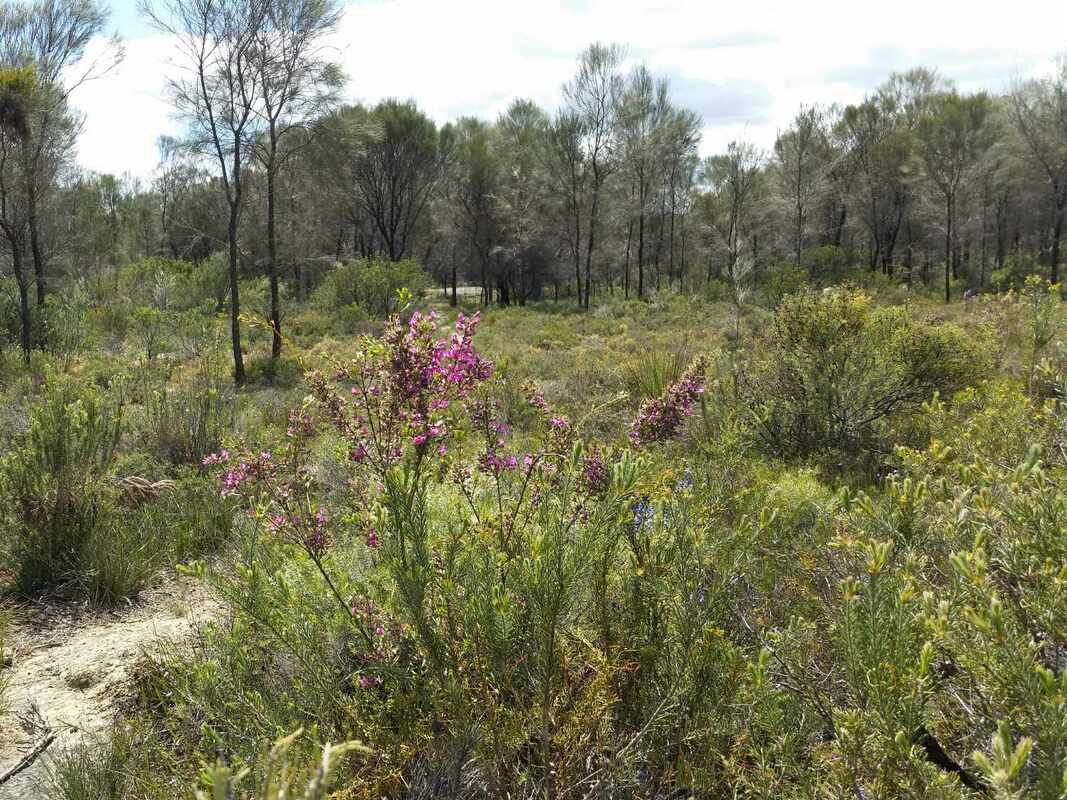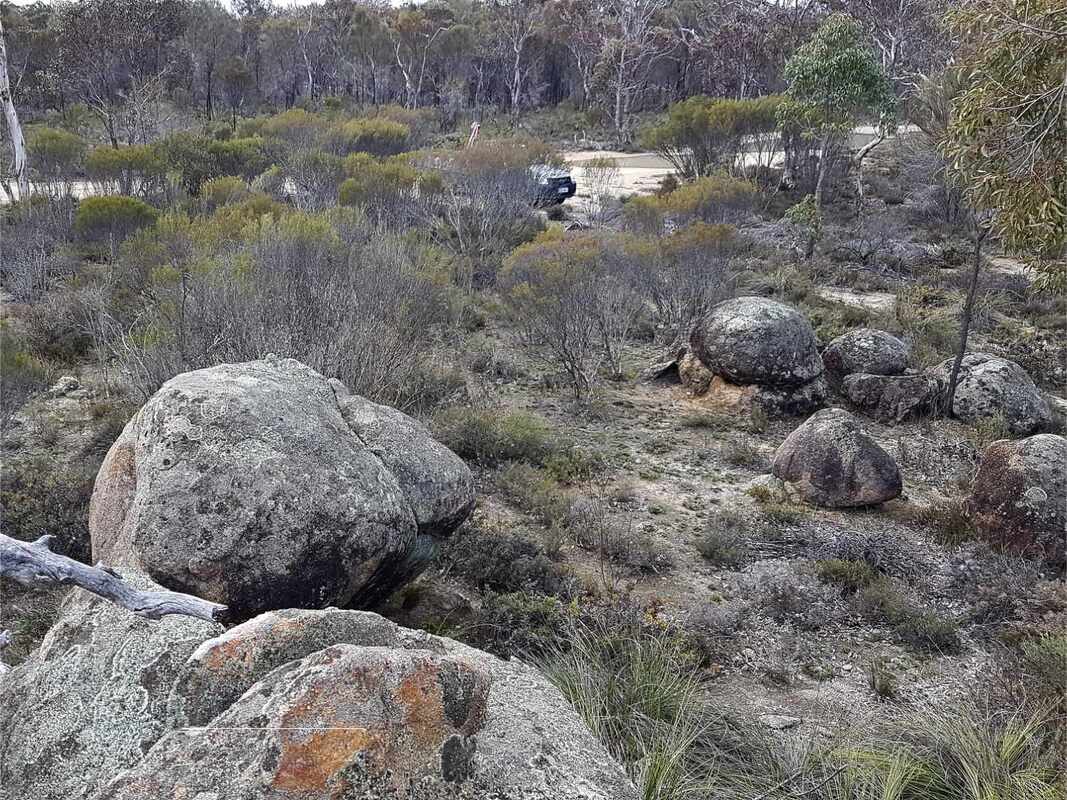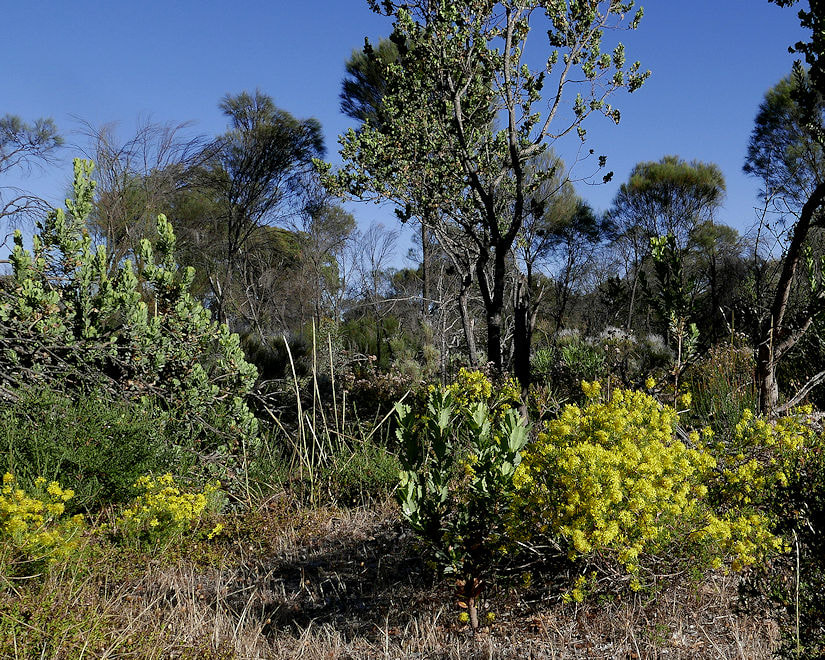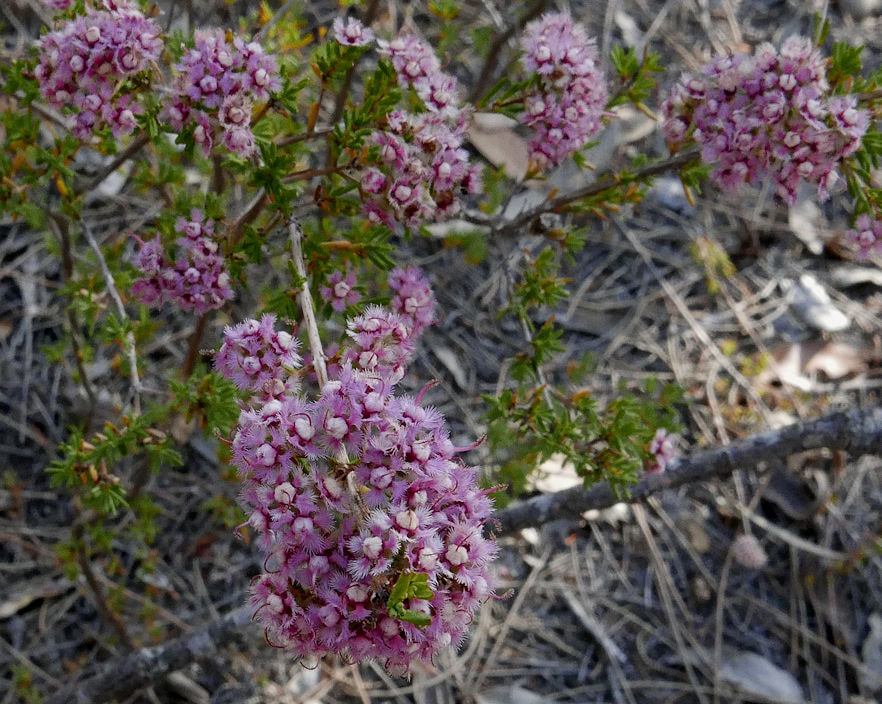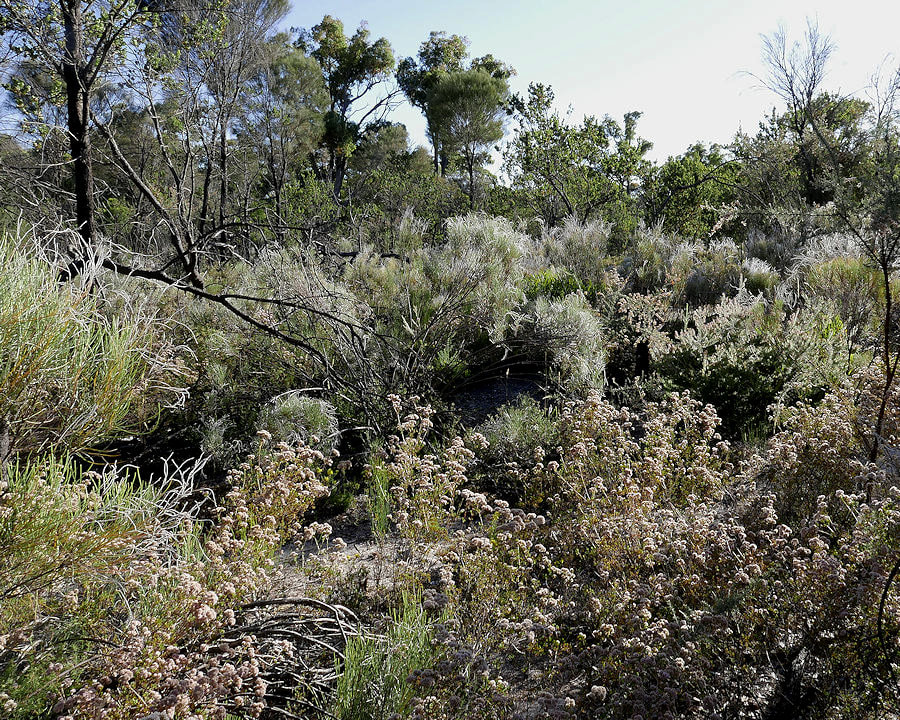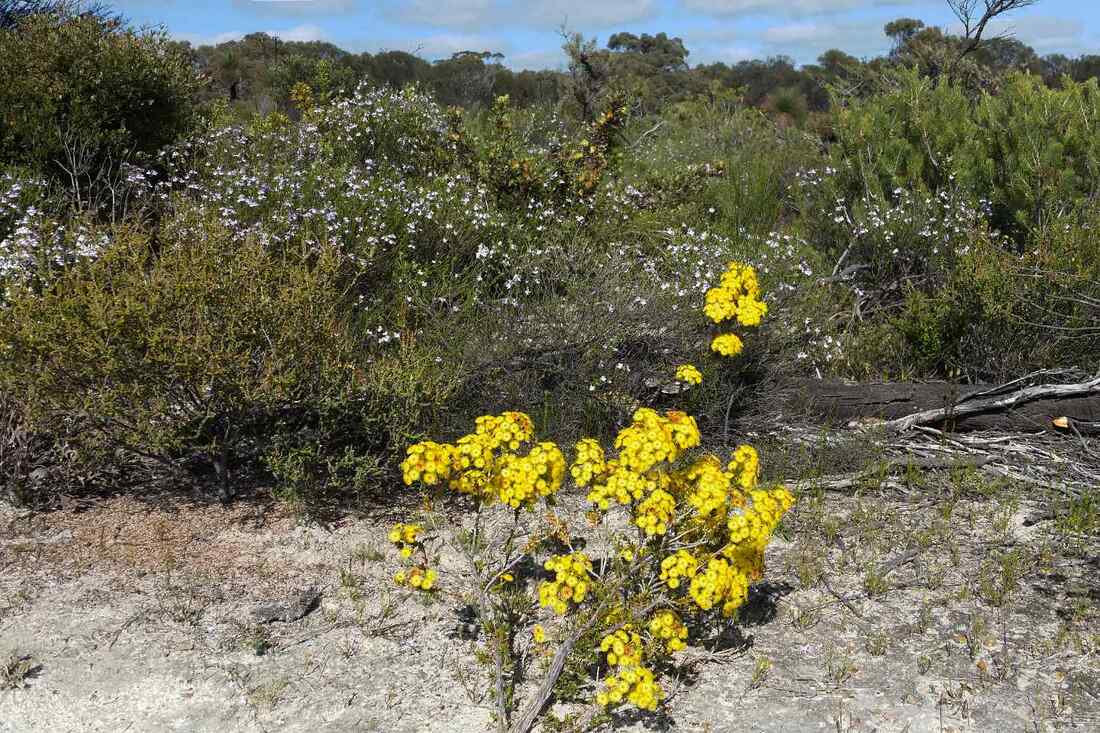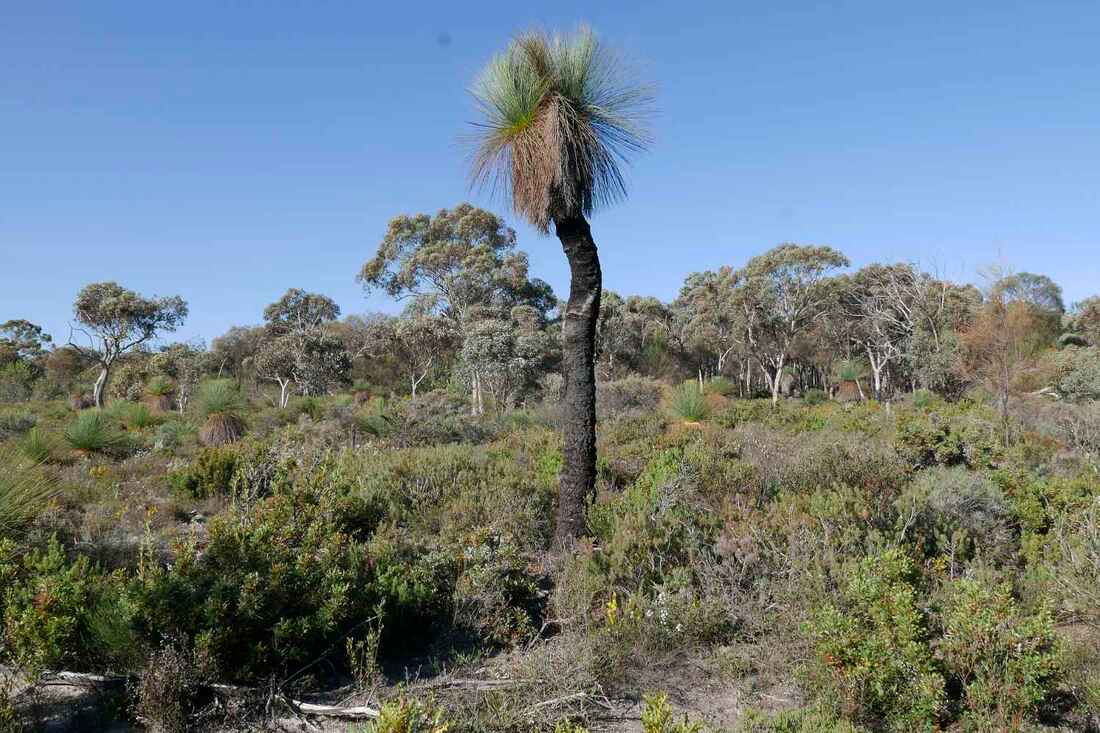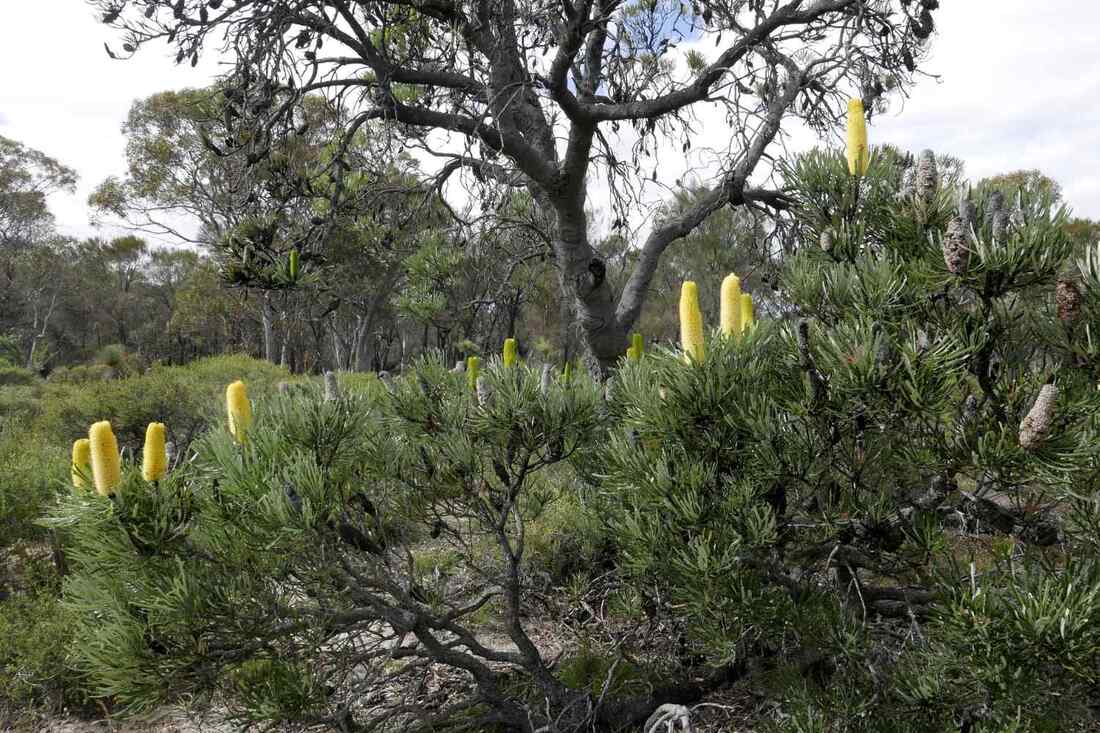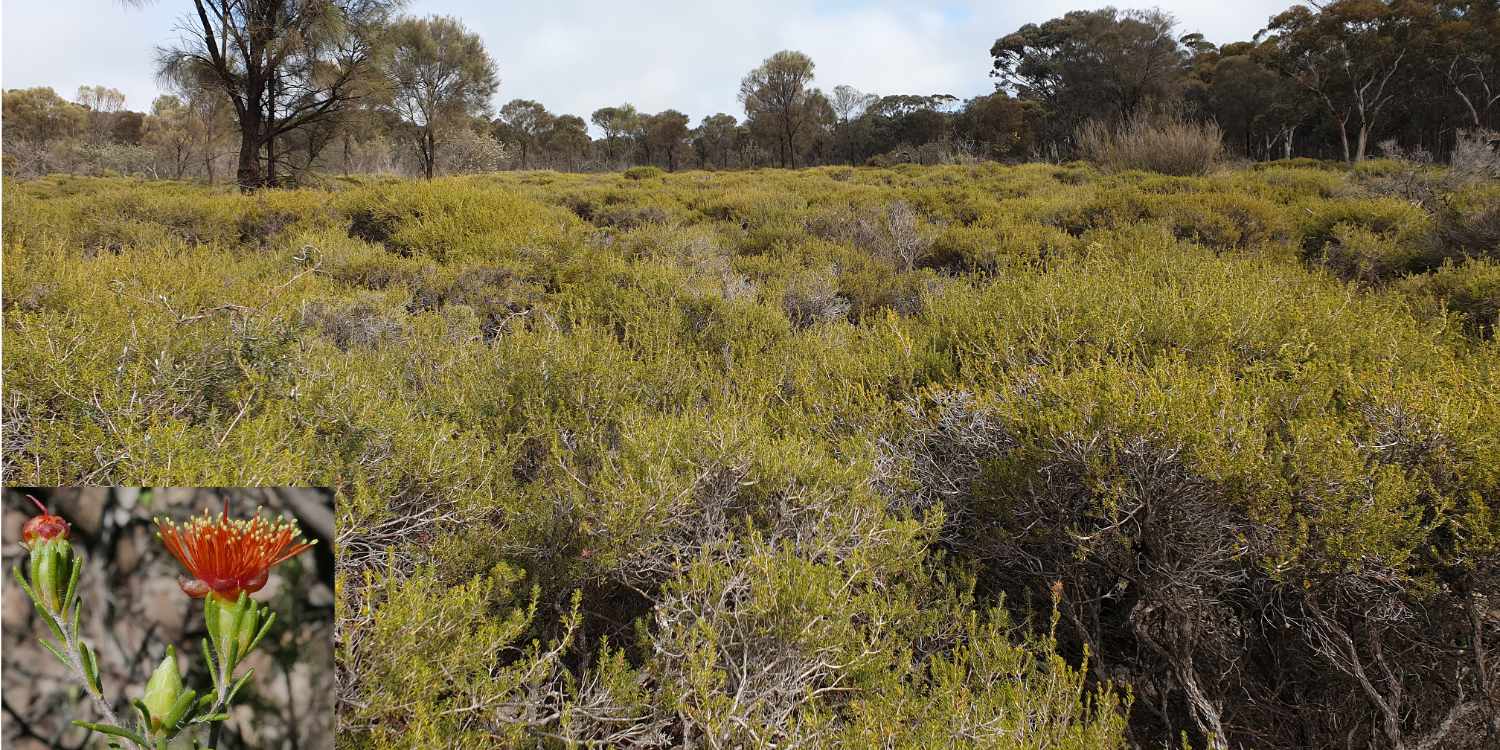Kwongan heath refers to areas of shrubland with few or no trees, which are interspersed between woodlands (jarrah-marri, rock sheoak, wandoo, York gum-jam, mallee, and salmon gum) . They are always on infertile poor water-holding soils, which support a large number and diversity of flowering shrubs and small plants. Orchids are uncommon, but kwongan areas are great for wildflower lovers and bird watchers. Most kwongan occurs on lateritic sand and gravel uplands, which can cover large areas in the wheatbelt, or patches in hilly areas like Foxes Lair.
Kwongan plants can vary significantly from one place to another. Tammas (Allocasuarina species), and rushes/ sedges are common, in addition to more showy flowering species like acacias, Proteaceae, and Fabeaceae
- Dense prickly scrub on lateritic soils, which range from shallow gravel or ironstone uplands to yellow and white sands on upland slopes and hollows.
- Yellow and white banksia dominated sandplain dunes and slopes usually on the east-southeast of salt lakes.
- Shallow gritty to clay soils associated with granite or mafic rock outcrops
Foxes Lair. A lovely patch on the western half of the Banksia Trail has regenerated after a fire in 2009. This section of the walk has flowers from July to late November, with differing species becoming prominent at varying times. Notable plants include Hakea lissocarpha, several dryandras, Grevilleas tenuiflora and leptobotrys, Pimelea ciliata, Stylidium amoenum, and Jacksonia epiphyllum. Occasionally I see Elegant Parrots feeding there
A tiny patch of winter-wet, grass tree kwongan clay adjoining the claypit has many species including plants found nowhere else in Foxes Lair.
An upland plateau on the Claypit Walk contains a grey sandplain (almost) kwongan plant community with mainly parrotbush (Banksia sessilis), and roadside tea-tree (Leptospermum erubescens) amongst scattered marris.
| Yilliminning Rock Reserve has a kwongan ridge and slope alongside Birdwhistle Road just past the turnoff to the rock. In late October there is a spectacular display of pinkish-white Verticordia eriocephala (Cabbage Verticordia) in a low slope on the west of Birdwhistle Road about 500 metres past the turnoff to the rock. |
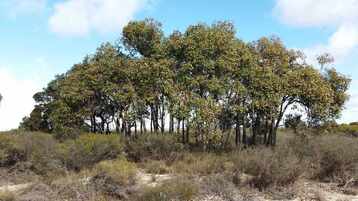 Dwarf marri at Toolibin cemetery
Dwarf marri at Toolibin cemetery

